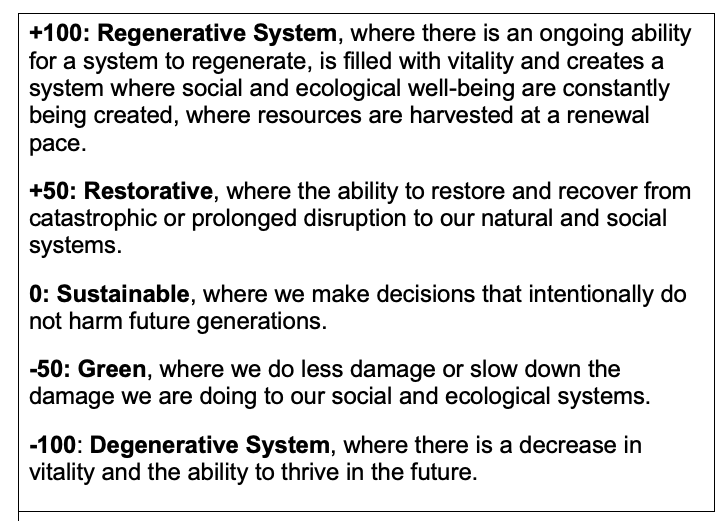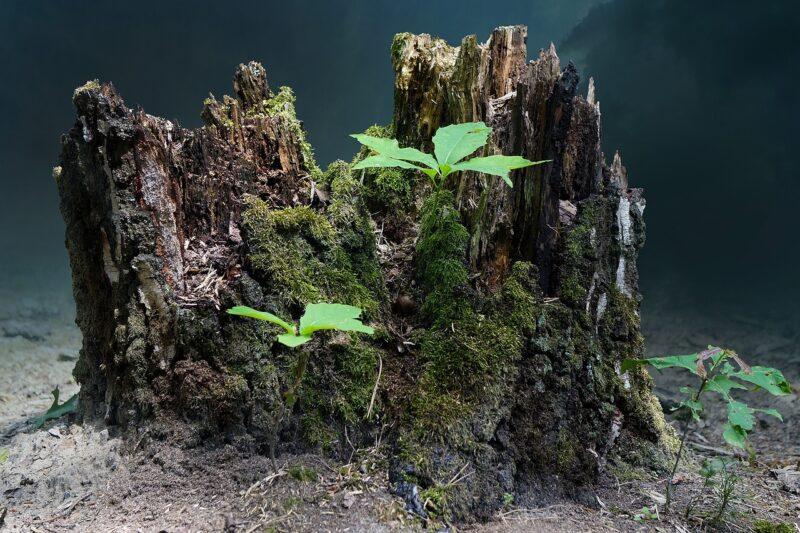Earlier this year, I wrote a series of blog posts on the characteristics of resilient systems and corresponding sources of fragility in organizations. In the months since these blog posts were written, I have been attracted to generating another series of posts with a regenerative systems theme. I’ll write on regeneration, regenerative systems, and mindsets in this new series.
I’ve observed that people can understand sustainability and how it impacts individual and organizational choices. Unfortunately, they don’t clearly understand how a restorative or regenerative system might differ from a sustainable approach to our world.
This series of blogs is designed to
- Strengthen our understanding of regenerative systems.
- Explore how this understanding can create important mindset shifts.
- Explain the impact of this new mindset on our leadership practices and organizational designs.
I see us on a journey moving from a degenerating, extractive culture, and organizational design toward sustainability.
Remember however, that sustainability isn’t the destination. Sustainability is about not harming our future generations.
However, this doesn’t help us restore the damage our unsustainable business practices have already done. And it also doesn’t help us push beyond restoration toward a design intended to create a regenerative system.
Degenerative to Regenerative Systems
If we were to create a continuum from -100 to +100, our practices would move from and toward on a scale that looks something like this:

Remembering the Legacy of Others
In 2020 Roman Krznaric released a great book titled The Good Ancestor: A Radical Prescription for Long-Term Thinking.
Krznaric’s book gave me the language to describe what I was aspiring to. A legacy mindset invites us to seek an answer to this question – How can we be remembered well?” I was motivated to write this new blog series on regenerative systems in part by my desire to be a “good ancestor” for my nieces and nephews, their children, and future generations. I don’t want to be remembered as someone who stood aside and let the status quo rule. I want them to remember that at this time and place I stood up for future generations and their right to inherit a livable world.
The concept of having a legacy is a bit challenging in the US, in part because we tend to forget a person once they they’ve left their professional life behind. I have a good friend who retired from 30+ years of work founding and leading a domestic violence shelter in my community. She was responsible for so much of the organization’s current success because of the strategies she championed, and the initiatives she started to build long-term partnerships in the community to support the elimination of domestic violence. It was this dear friend’s leadership (in collaboration with many others) that created a legacy for her work in our community. While she was still working and shortly after she retired, she was recognized for her contributions to the community.
Where I live we’re lucky to have many nonprofit leaders who have strengthened our community during their time as leaders. Our past shapes our present, and in turn this shapes the quality of our future. Unfortunately, most communities don’t have a way to keep these people and their legacies alive in a way that captures this understanding on a regular basis. Perhaps we need to become better storytellers so we can keep these memories alive, and weave the past, present, and future together into the warp and weft of our collective community and organizational identities.







